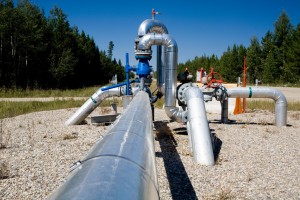Oil, gas and other fuels and chemicals crisscross the continent and beyond through a sprawling system of pipelines under the privy of various operators. With so much infrastructure spanning the country, pipeline safety should be a top priority for all involved. Here’s what you need to know.
Pipeline safety regulations

The PHMSA’s mission is to protect people and the environment by advancing the safe transportation of energy and other hazardous materials that are essential to our daily lives. To do this, the agency establishes national policy, sets and enforces standards, educates, and conducts research to prevent incidents.
A sprawling, hazardous network
Over the last 20 years, more than 2 million barrels of oil have spilled from pipeline incidents, and another 2 million barrels of jet fuel, natural gas, diesel, propane and other similar fuel.
Mitigating leaks
Following several recent high-profile leaks, including a 210,000-gallon leak from the Keystone pipeline in South Dakota, the PHMSA announced new proposals to update safety requirements for the country’s 3.2 million km pipeline network.
According to the PHMSA, the proposed rules will provide pipeline operators with regulatory clarity and certainty, and recommendations to help proactively manage pipeline integrity.
Joint integrity for pipeline spill safety
Unless anti-corrosion systems are compromised or the integrity of the system is damaged by outside influences (excavations), it is very rare for pipelines to fail. The weakest links in all pipeline systems are the bolted connections.

Reinforcing the weakest links
Avoiding failure at these points requires applying and verifying joint integrity through best-practice tightening procedures. To that end:
- Technicians must understand (and pipeline operators must supply) complete and accurate bolting procedures.
- Technicians must be regularly trained and certified.
- Equipment in use must be suitable for the scale of the job, correctly maintained and regularly calibrated.
- Accurate data must be gathered throughout tightening.
In the past, accurate data about the tightening process was rarely accumulated and stored for posterity. As the PHMSA expands mandatory data collection and validation requirements for system integrity management, robust and intuitive data recording tools become invaluable.
It is likely the fine for noncompliance will be hefty enough to make even the largest pipeline operators adhere to data-gathering requirements.
Standards are changing, and businesses must keep up
Pipeline organizations like the PHMSA combine with health and safety considerations to drive pipeline operators across the world to ensure the integrity of systems. In turn, operators will specify these more stringent procedures to their installation and maintenance contractors., and pipeline failure due to improper bolting technique will drop.
Learn More from Ultra Torq
Upgrade your joint integrity systems and procedures now, so you don’t scramble at the last minute to catch up in the next phase of your pipeline project.



